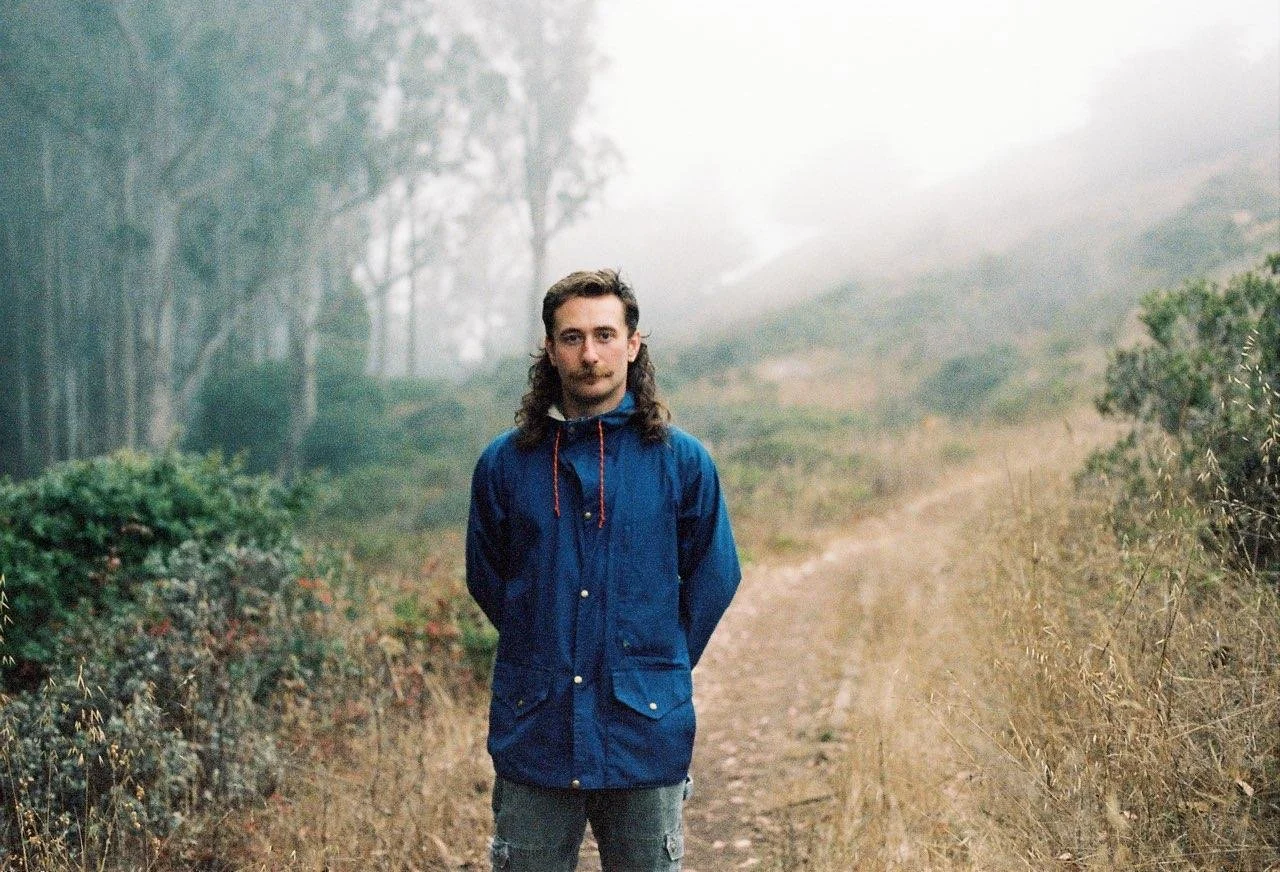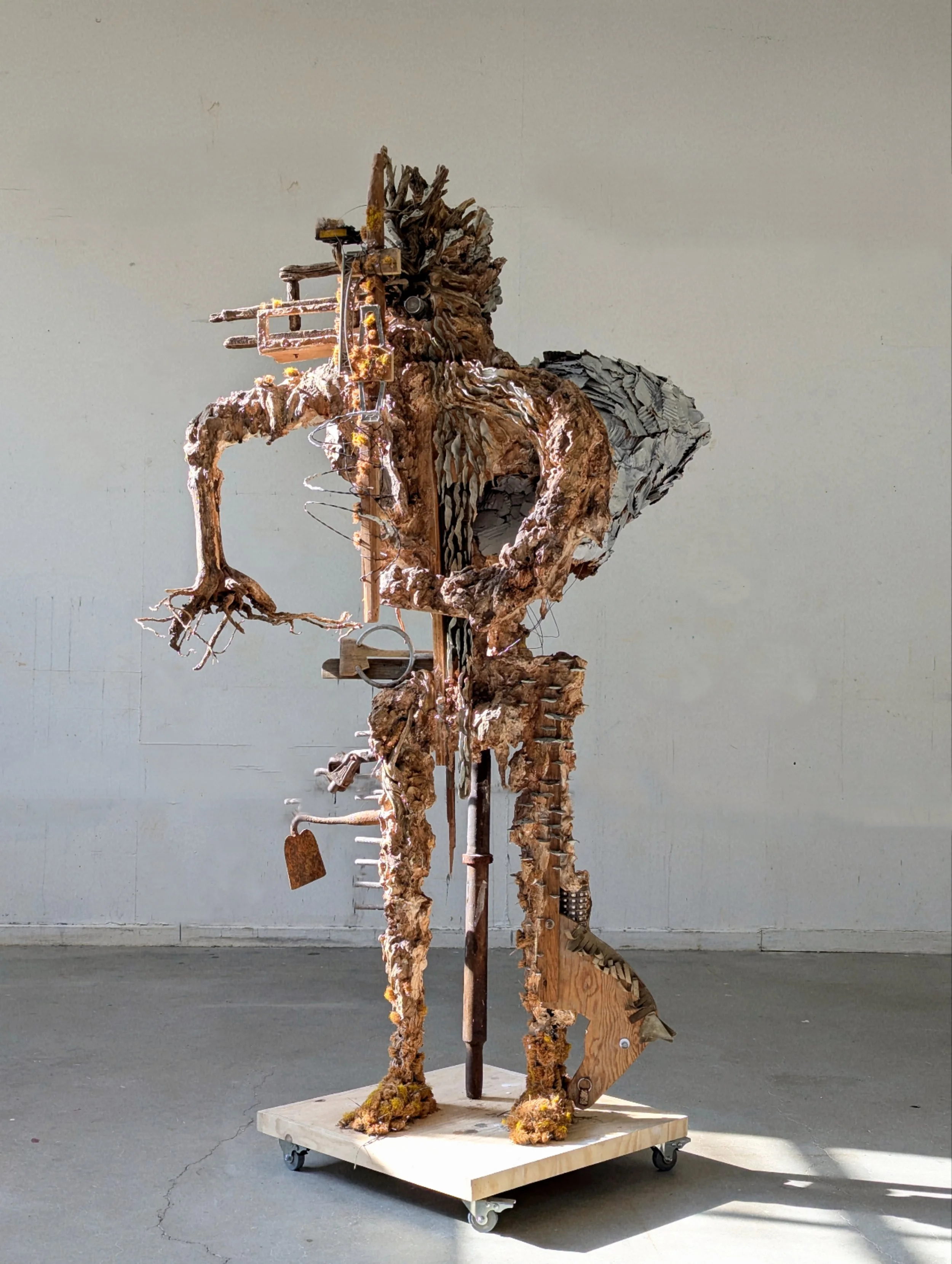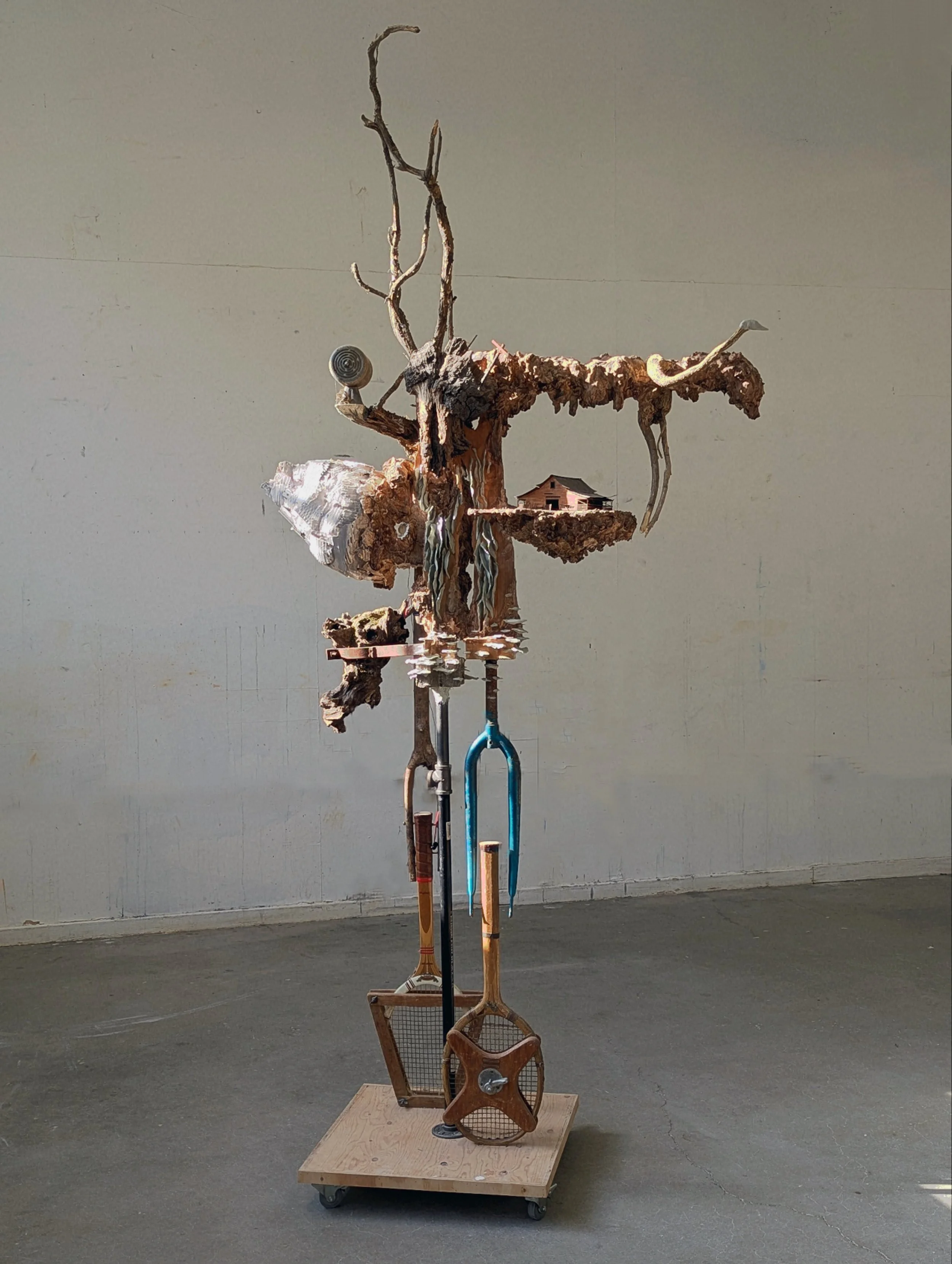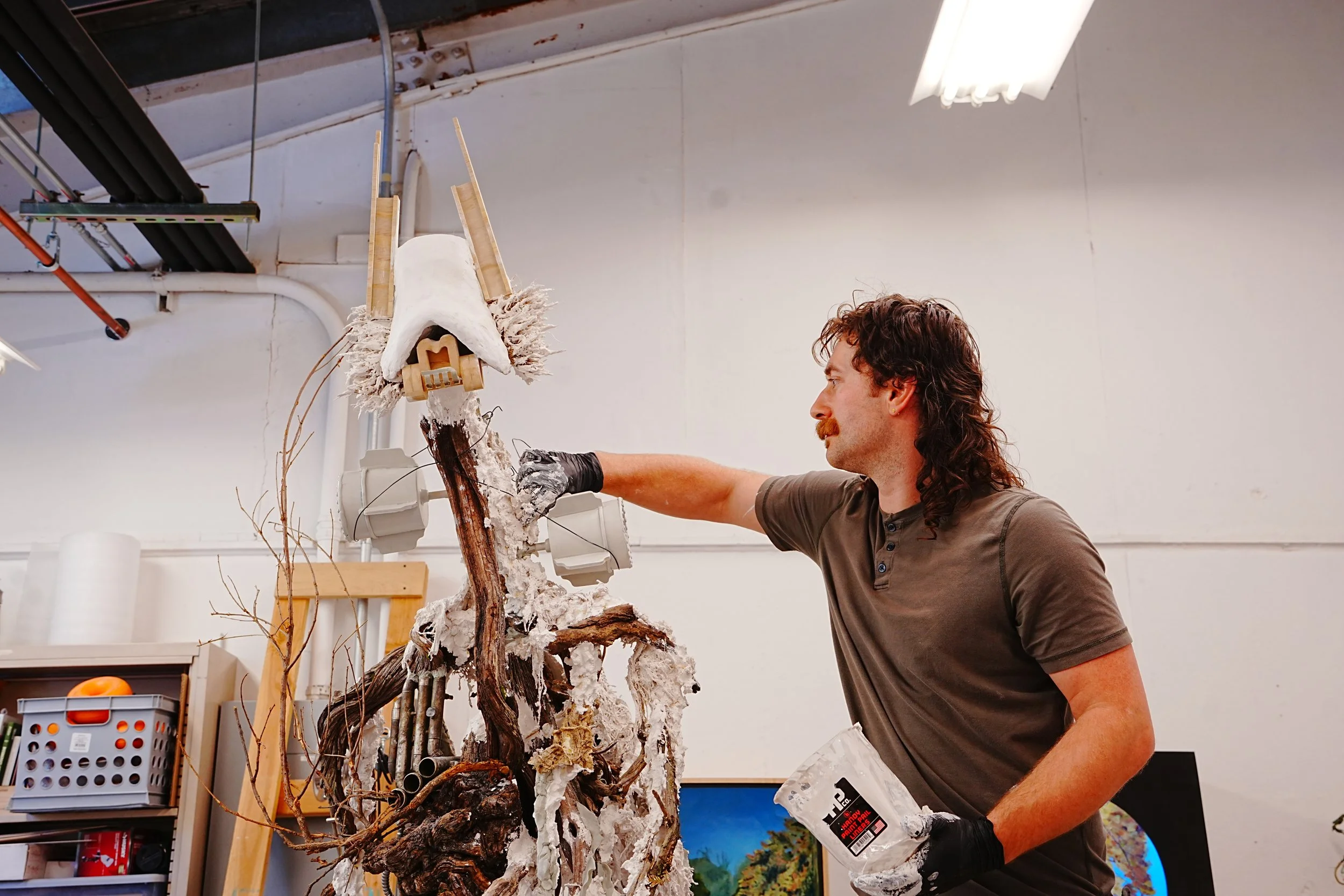
Joel’s Monsters
Behind-the-Scenes for Moneotherid x purpureala & Moneotherid x mycetobracteum & Moneotherid x pseudocirripedia
Joel Taylor Murnan
Joel Taylor Murnan (b. 1997 Grass Valley, CA) pursued his education at the San Francisco Art Institute and obtained a B.F.A. in Sculpture from California College of the Arts. Currently, he is a M.F.A candidate at the University of California, Davis.
Murnan’s work explores themes of land and control, drawing inspiration from his childhood memories of a pastoral landscape. Murnan’s sculptures capture the mood of the terrain, utilizing diverse mediums that offer a unique perspective on our relationship with the land.
Past Works
Scarecrow
2024, wood, epoxy clay, plaster, foam, LED lights, cardboard, acrylic and found objects, 48” x 36” x 80”
Priapus
2024, wood, epoxy clay, plaster, foam, LED lights, cardboard, acrylic and found objects, 95″ x 44″ x 33″
Behind The Scenes:
Joel’s Monsters
Behind-the-Scenes for Moneotherid x purpureala & Moneotherid x mycetobracteum & Moneotherid x pseudocirripedia
Monsters—the figures rooted in nearly every myth, folklore, and collective memory —have long helped people name what they could not explain. In Joel Murnan’s studio, these monsters reemerge as markers of danger, uncertainty, and thresholds—both geographical and psychological.
Rather than literal creatures, Joel’s monsters are imagined offspring of damaged environments. Built from salvaged metal, broken tools, and found debris—objects that once served a purpose and have since been discarded—they embody the consequences of ecological collapse. “These monsters are what comes from the earth, from destruction,” Joel told us. “They rise from the ground and live off the toxicity we created.” They are not warnings of some distant threat, but manifestations of what already exists: future lives born from waste, survival, and mutation.
Over time, these monsters take on emotional and symbolic roles, shaped as much by cultural memory as by material. They become vessels for collective history and ecological critique, asking what it means to inhabit a world shaped by both myth and microplastics, by loss and continuity. In this sense, the monster becomes a figure of connection—a way to trace the fragility and resilience of the landscapes we share.
Joel also reflects on our own place in that landscape through the monster. “I wanted someone to feel unsure if it was pointing at them, or watching them,” he says. These sculptures resist simple interpretation; they neither clearly invite nor reject the viewer. This ambiguity echoes a saying he references: “Bad spirits draw you in and trick you. Good spirits warn you to stay away.”
In Joel’s practice, monsters are tools for navigating modern anxieties—embodiments of ecological memory, cultural displacement, and the strange beauty of survival. They are a companion species, born from the same earth we’ve poisoned, shaped by the same hands that built our cities.
Photo credit: Edgar Zhang
Writer Livia Xie & Edgar Zhang Editor Yuchen Hou
Back to Art Studio Graduation Thesis 25’
The physical booklet will be available in the lobby at @manettishrem throughout the show, June 5 to June 22, 2025.







